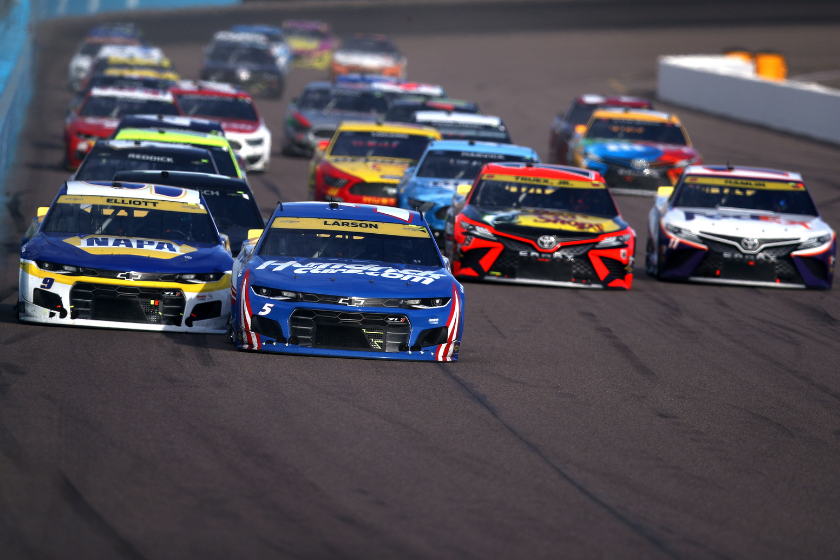The newest points system in NASCAR was established back in 2016, and if you've become a fan of the sport in the last five years, you may not even know how the system works. Numerous forms of motorsports use a points system to keep track of standings, but there are some variations specific to NASCAR.
Videos by FanBuzz
Maybe you're new to the racing, or you just need a refresher to keep up with your favorite NASCAR drivers. Knowing how the points system functions is crucial to understanding what each driver will need to do to become a potential NASCAR playoffs contender and rise up in the standings to become the season champion. Below, we'll give a brief overview of how it all works.
The NASCAR Points System Is Largely Based on Finishing Position

Photo by Sean Gardner/Getty Images
For each NASCAR Cup Series race in the regular season, drivers will be awarded a number of points based on their finishing position at the end of the race. The race winner and first-place finisher receives 40 points, second place gets 35, third place gets 34, and it continues in a downward trend with the last-place driver getting one point.
This point standings concept is pretty easy to grasp, and it's pretty clear to see why these drivers are all fighting as hard as they can on the race track to pass drivers, regardless of their position. To visually see how the main way of earning points during each race works, take a look at how many drivers points are earned for each of the 40 possible finishing positions:
1st place - 40 points
2nd place - 35 points
3rd place - 34 points
4th place - 33 points
5th place - 32 points
6th place - 31 points
7th place - 30 points
8th place - 29 points
9th place - 28 points
10th place - 27 points
11th place - 26 points
12th place - 25 points
13th place - 24 points
14th place - 23 points
15th place - 22 points
16th place - 21 points
17th place - 20 points
18th place - 19 points
19th place - 18 points
20th place - 17 points
21st place - 16 points
22nd place - 15 points
23rd place - 14 points
24th place - 13 points
25th place - 12 points
26th place - 11 points
27th place - 10 points
28th place - 9 points
29th place - 8 points
30th place - 7 points
31st place - 6 points
32nd place - 5 points
33rd place - 4 points
34th place - 3 points
35th place - 2 points
36th place - 1 point
37th place - 1 point
38th place - 1 point
39th place - 1 point
40th place - 1 point
But, How Do Bonus Points Come Into Play?

Photo by Chris Graythen/Getty Images
Here's where a few more factors get thrown in, creating more potential for drivers to earn additional playoff points on top of the points related to their finish. Normally, each race will have three different stages. These additional points allow drivers to earn points during the first and second stages of the race. The final stage goes off the points listed above.
The top-10 drivers in the first and second stages will qualify for these extra points. The driver in first place during these stages will be awarded 10 points, second will get 9, third gets 8, and it continues to count down to the 10th position, which is awarded one extra point. Pulling off stage wins can greatly help drivers move up in the ranks.
Drivers accrue a larger point total for each race up until the final race of the season, determining the standings of both the driver and the owner. However, there is a reset in points for the 16 drivers that make it to the Cup Series playoff rounds (formerly known as the Chase for the Cup) after the regular season finale at Daytona. There are also a few more resets in the postseason.
In the end, the winner of the Cup championship comes down to who has the most combined points at the end of the season. Grabbing a race win is a quick way to get to the top spot, but consistently attaining these points is what's going to keep that driver in a dominant position.
Products featured on FanBuzz are independently selected by our editors. However, when you buy something through our links, we may earn a commission.
This post was originally published on March 10, 2021.
